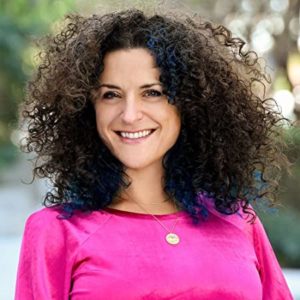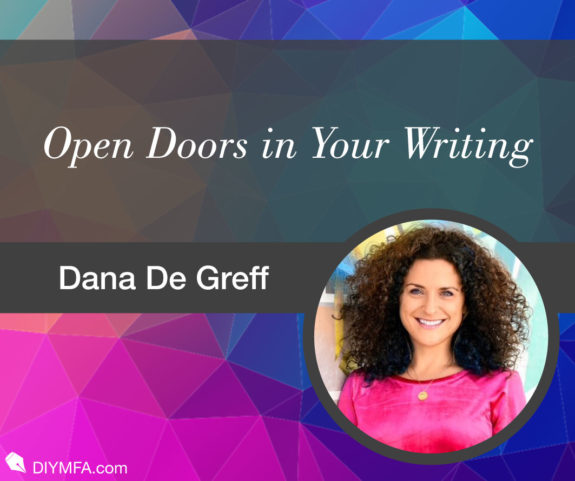I’ve always loved a good prompt when it comes to writing because I’ve always loved a challenge. These are usually questions or directives (though they don’t have to be) with the goal of inciting a written response from the writer, such as: “two strangers meet in a bar, and one of them turns to the other and says, ‘I know what you did’…write what comes next!”
It wasn’t until I started teaching writing, though, that I realized for some people, writing prompts aren’t exciting, fun, or inspiring. They’re dry, formulaic, and, at times, way too specific. They can even cause anxiety and a fright, flight, or freeze response.
Prompts are supposed to incite action—the hand moving across the page, fingers tapping away—but if nothing happens, then you feel like a failure. A sorry excuse for a writer.
At least, that’s what some of my students felt. Rather than produce, they gave up, and sometimes, they even got angry.
Open Doors, not Prompts
A few years ago, I read Rebecca Solnit’s A Field Guide to Getting Lost and came across a quote that I reread, underlined, and put on my wall, and which eventually ended up in my own book, Words and Wonder: A Guide to Becoming a Creative Writer. She wrote:
Certainly for artists of all stripes, the unknown, the idea or the form or the tale that has not yet arrived is what must be found. It is the job of artists to open doors and invite in prophesies, the unknown, the unfamiliar.
Yes, I thought. The right word was door, not prompt; the right way of thinking of writing was as an invitation. We writers are explorers and adventurers, and we have to face the unknown with a sort of courage, a willingness to have awkward encounters or even scary ones. But the rewards are many, and we may even be delighted by whom we let in.
Welcoming the Unknown
I started to think about how I approached the blank page, how I taught others to do the same, and what I could do differently. Many of the prompts I used from other writers and teachers were about things, for example. Many showed a picture and asked us to imagine what was happening in it. Static, removed, cold.
I wanted to get away from all of that, and so I started to incorporate more of the personal, more of the sensual, into my doors. What did you eat for breakfast today, I asked, for example, what smells were involved? Now, write about a character unlike you who had a painful reaction to one of those smells.
I thought about the elements, about nature, about how so few of us write outside. Could we, perhaps, write in bodies of water, a body in a body, and would it change the art? Why not try? As I started to change my ways of approaching prompts and pushing myself to be more creative, inventive, and unexpected, I realized that we were all surrounded, constantly, by doors. All we had to do was take that first brave step and open them.
What Must Be Found
The truth of doors is that sometimes, we don’t like what or who is on the other side. Often, what’s on our side—the known, the imaginable—is safe, comforting, and easy. We don’t have to think too hard; we can go into autopilot mode, like brushing our teeth or breathing. And autopilot is good for getting things done, but not great for creativity. To think, then, of opening doors as the writer’s “job” as Solnit states, is deceptively simple: once that door is open, the work has just begun, and who knows what will come inside?
Still, at the end of the day, great artists never became great by playing it safe. Great artists must find the unfindable. Or at least try.
7 Open Doors: One for Every Day of the Week
If you’ve never opened a door, I’ve compiled a few of my favorites below. Some of these appear in my upcoming book, Words and Wonder, and some are brand new. Some are geared toward fiction, others poetry, nonfiction, and hybrid forms, but many have no specific genre. Start from the beginning, or at the end, or anywhere in between, and I hope that you always, always, use writing as an invitation.
1.Write this line down:
“That summer, everybody was listening to that song. It was playing everywhere.” Next, look up and listen to this song: “Come Meh Weh” by Sudan Archives. Write whatever words come to you as you listen, whatever feelings you feel, whatever you see in your mind’s eye. If it helps, you can close your eyes for a minute, or for the entire song first. When the song is done, write a short piece of flash fiction or poetry.
2. Write somewhere in water—literally.
Take your notebook and write in the ocean, a river, a pool, or even your bathtub. Can you “become” water? Describe that for a page, or more.
3. Choose an element from the periodic table.
Do research on it for 10-15 minutes, then incorporate your findings into a scene of dialogue between three or more characters.
4. Choose a piece of your writing and create a playlist for it.
This can be for a long project, say, a book, or perhaps for a poem or blog. Try listening to this playlist every time you write. Alternatively, make a writing playlist, perhaps filled with songs that make you feel calm and inspired in order to settle down at your writing desk with more ease.
5. Write a scene, essayette, story, or poem in which a syzygy occurs.
SYZYGY is defined as “the nearly straight-line configuration of three celestial bodies (such as the sun, moon, and earth during a solar or lunar eclipse) in a gravitational system.
6. Write somewhere unexpected today.
This could be in your car, or in a diner, or under your bed, or on a slide. Put your body in a new (and safe, of course) place, and see what happens to your writing.
7. Sit down in front of a door, any door.
Close your eyes. Imagine yourself opening it, and on the other side is someone or some being, you have never met before, but triggers a memory you forgot you had buried long ago. Open your eyes. Describe what or who is on the other side, and if you don’t know where to start, start like this: “we both knew that this was the day our lives would change forever.”
Tell us in the comments: Have you found any open doors in your writing? What happened next?

DANA DE GREFF is the author of Alterations, winner of the Rane Arroyo Chapbook Series. She has taught Creative Writing at the University of Texas at Austin, the University of Miami, Books & Books, The Loft Literary Center, Austin Bat Cave, Writing Workshops, and Writers.com. She’s the recipient of a 2021 Pushcart Prize Nomination and her work has appeared in Cosmonauts Avenue, PANK, Origins Journal, and Gulf Stream Magazine, among others. She works with emerging and established writers, helping them bring their books to life through creative tools, publishing insight, and mentorship. Words and Wonder is her first book of nonfiction.
Find out more at her website and follow her on Instagram







